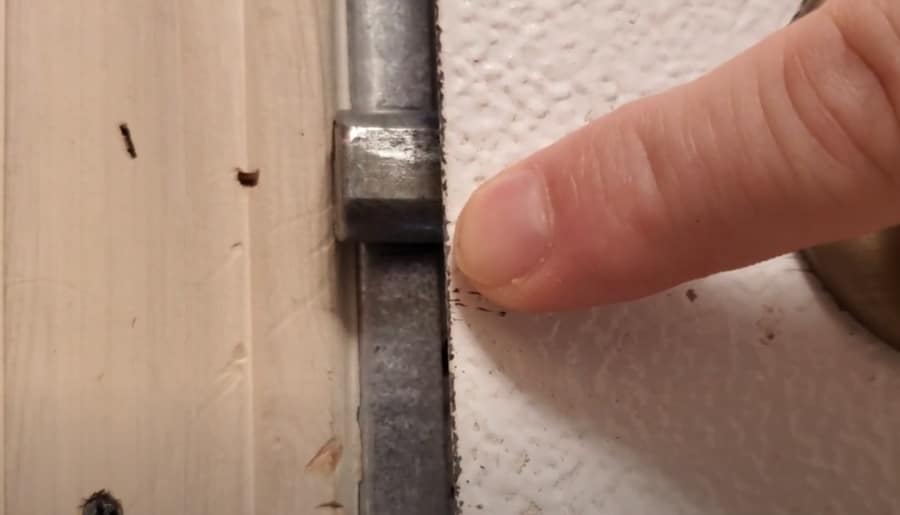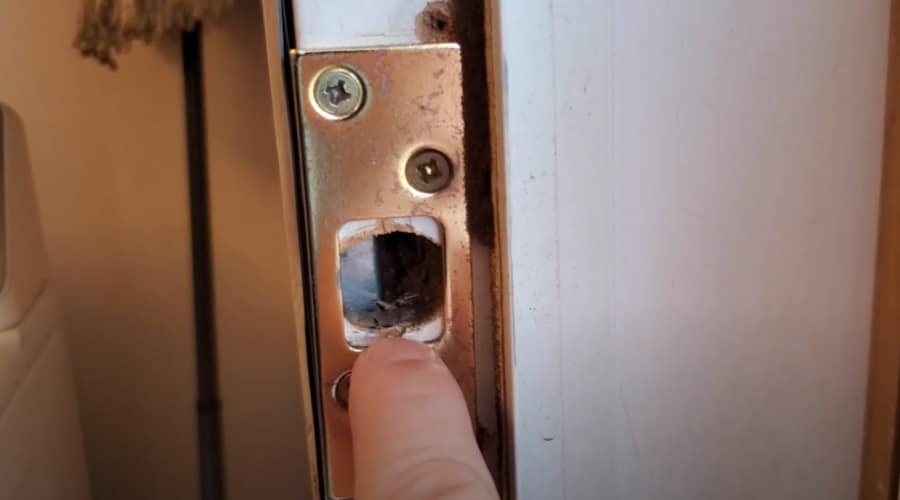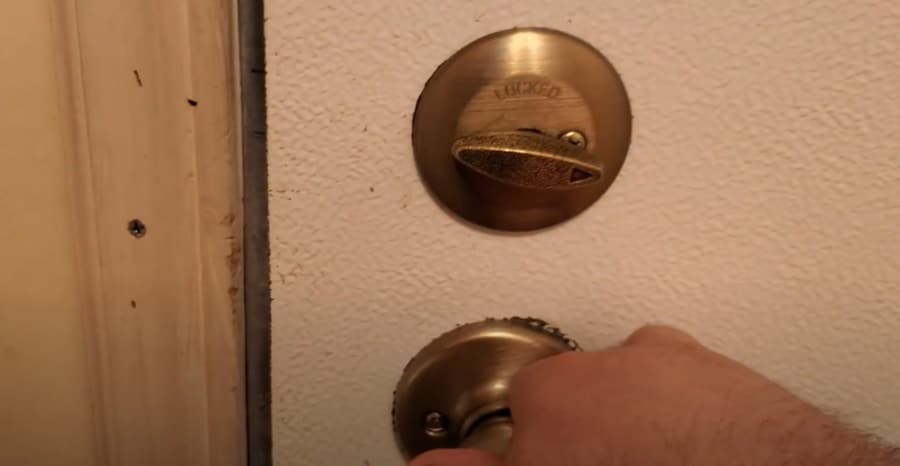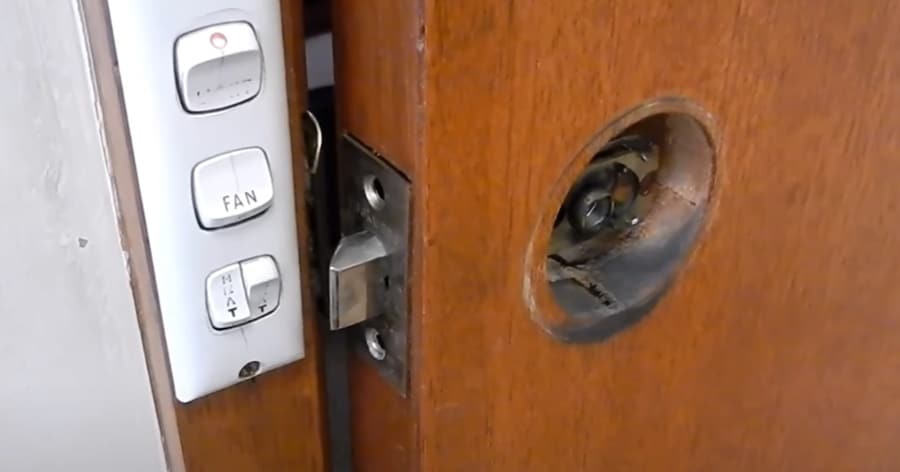Troubleshooting a Deadbolt Won’t Unlock: Tips and Solutions
Uncover the potential causes and effective solutions for a deadbolt that won’t unlock, ensuring the security and accessibility of your home.
A deadbolt that won’t unlock can be both frustrating and concerning, as it compromises the security and accessibility of your home. Various factors can contribute to this issue, and identifying the cause is crucial for finding an appropriate solution.
If you’re facing a deadbolt that won’t turn, there are several steps you can take to diagnose and fix the issue. Here’s a step-by-step guide to help you resolve the problem:

Inspect the Key
Before working on the lock, check your key for signs of wear or damage. The lock mechanism might not engage properly if the key is worn or bent. Try using a spare key or have a new one made to see if it resolves the issue.
Clean the Lock Cylinder
Dirt and debris inside the lock cylinder can make it difficult to turn the key. Use a lock lubricant or compressed air to clean the Cylinder and remove debris. After cleaning, lubricate the lock to ensure smooth operation.
Check the Door Alignment
A misaligned door can cause the bolt and strike plate to be misaligned, preventing the deadbolt from turning. Ensure that the door is hanging straight and that the gap between the door and the frame is even. If necessary, adjust the hinges or strike plate to realign the door.
Thaw a Frozen Lock
In cold weather, moisture inside the lock can freeze and prevent the deadbolt from turning. Gently heat the key with a lighter or hairdryer before inserting it into the lock, or use a lock de-icer spray to unfreeze the lock mechanism.
Examine the Internal Mechanism

If the problem persists, you may need to remove the deadbolt from the door and inspect the internal mechanism for signs of damage or wear. If you find any broken parts or excessive wear, consider replacing the deadbolt or repairing it professionally.
Adjust or Replace the Strike Plate
If the strike plate is misaligned or damaged, it can prevent the deadbolt from turning. Loosen the screws holding the strike plate in place and adjust its position as needed. Test the lock after making adjustments. If the problem continues, consider replacing the strike plate.
Consult a Professional Locksmith
If you’ve tried all the steps above and your deadbolt still won’t turn, it’s time to call a professional locksmith. A skilled locksmith has the tools and expertise necessary to diagnose and fix the issue, ensuring the security and functionality of your lock.
Following these steps and systematically troubleshooting, you can often fix a deadbolt that won’t turn and restore your home or office access. However, consult a professional locksmith if the issue persists or you’re unsure how to proceed.
If you still have more problems with the deadbolt won’t unlock, please check the following video to learn how to fix it:
How to repair a Deadbolt that won’t unlock?
Why is the deadbolt won’t unlock?
A deadbolt that is not unlocked or turning can be a frustrating and concerning issue, as it compromises the security and accessibility of your home or office. There are several possible reasons for this problem, and understanding the cause is essential to finding the right solution. In this section, we’ll explore some of the most common reasons.

- Worn Out Key: Over time, keys can become worn or damaged, making it difficult to turn the deadbolt. Examine your key for any signs of wear or bending.
- Manufacturing Issue: Occasionally, a deadbolt may have a defect preventing it from turning properly. If you have recently installed a new deadbolt and are experiencing problems, consider contacting the manufacturer for a replacement or warranty service.
- Dirt or Dust in the Cylinder: Over time, dirt, dust, and debris can accumulate inside the lock cylinder, making it difficult for the key to turn.
- The lock is Frozen: In cold weather conditions, moisture inside the lock can freeze, preventing the deadbolt from turning.
- Poorly Installed Lock: A deadbolt that is not installed correctly can cause the bolt to bind or prevent the key from turning.
- Misaligned Doors: A misaligned door can cause the bolt and strike plate to become misaligned, preventing the deadbolt from turning.
- Misaligned Strike Plate: A misaligned strike plate can cause the bolt to bind, making it difficult to turn the key. Check the alignment of the strike plate and the bolt.
- Jammed Metal Keeper Plate: The metal keeper plate, or strike plate, can sometimes become jammed, preventing the deadbolt from turning.
- Internal Lock Mechanism Wear or Damage: If the internal mechanism of the deadbolt is worn or damaged, it can make it difficult to turn the key.
- Lubrication Issues: A lack of proper lubrication can cause the deadbolt mechanism to become stiff and difficult to turn with a key.
By identifying the cause of your deadbolt not turning and implementing the appropriate solution, you can restore the security and functionality of your lock, ensuring peace of mind and easy access to your home or office.
Deadbolt Maintenance to Avoid Deadbolt Not Turning
Regular maintenance of your deadbolt lock can help prevent issues such as the deadbolt not turning or unlocking. Here are some key maintenance tips to ensure the smooth operation of your deadbolt:

- Regular Cleaning: Over time, dirt, dust, and debris can accumulate inside the lock cylinder, making it difficult for the key to turn. Use compressed air or a lock lubricant to clean the Cylinder and remove debris. Perform this cleaning at least once or twice a year or more frequently if the lock is exposed to harsh environmental conditions.
- Lubrication: Keep the lock mechanism well-lubricated to ensure smooth operation. Use a graphite or silicone-based lubricant specifically designed for locks, and avoid using oil-based lubricants, as they can attract dirt and cause the lock to become sticky over time. Apply lubricant every six months or as needed.
- Key Inspection and Replacement: Regularly inspect your keys for signs of wear or damage. If you notice any issues, such as bent or worn-down keys, replace them with new ones. Using a damaged key can cause further wear to the lock mechanism and may result in the deadbolt not turning or unlocking.
- Proper Door Alignment: Ensure that your door is properly aligned, as a misaligned door can cause the bolt and strike plate to become misaligned, preventing the deadbolt from turning or unlocking. Check for even gaps between the door and frame and adjust the hinges or strike plate as needed.
- Strike Plate Adjustment: Periodically check the alignment of the strike plate and the bolt. If necessary, loosen the screws holding the strike plate and adjust its position until it’s properly aligned with the bolt. This will help prevent the deadbolt from binding or becoming difficult to turn.
- Inspect and Tighten Hardware: Inspect the screws and Hardware holding the deadbolt in place, and tighten any loose screws. Loose Hardware can cause the deadbolt to become misaligned or difficult to turn.
- Protect Against Freezing: In cold weather, moisture inside the lock can freeze, preventing the deadbolt from turning or unlocking. Protect your lock from freezing temperatures by installing weather stripping or using a lock de-icer spray during winter.
By following these maintenance tips, you can help prevent issues with your deadbolt not turning or unlocking, ensuring the security and functionality of your lock. Regular maintenance will also prolong the lifespan of your deadbolt, saving you time and money in the long run.
Conclusion
In conclusion, dealing with a deadbolt that won’t unlock can be challenging, but understanding the potential causes and how to address them can alleviate your concerns.
Whether the issue stems from a misaligned door, a jammed key, a worn-out lock, or even extreme weather conditions, there are effective solutions to help you regain access to your home.

